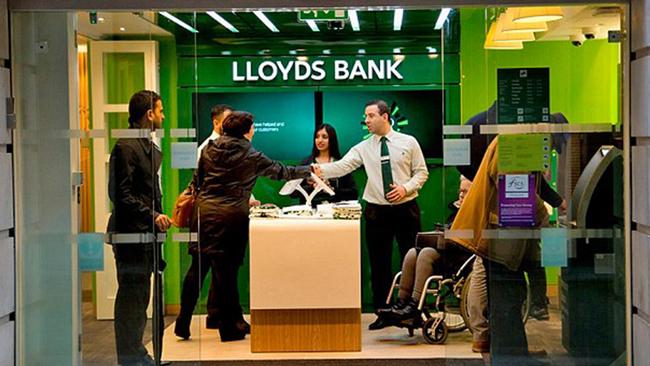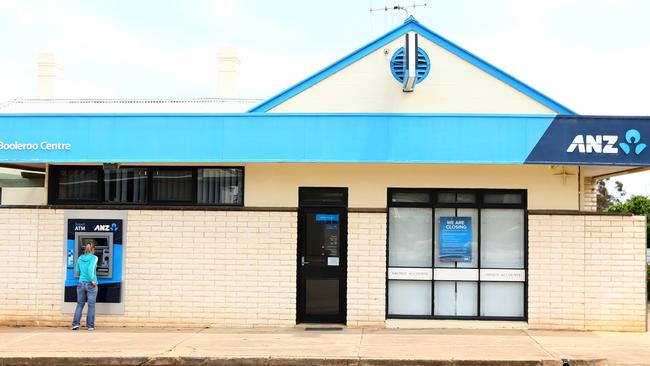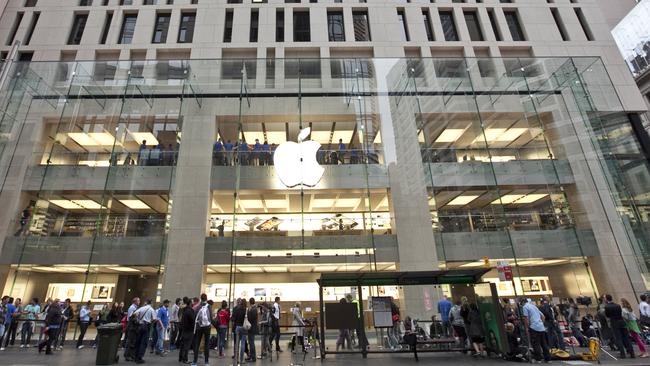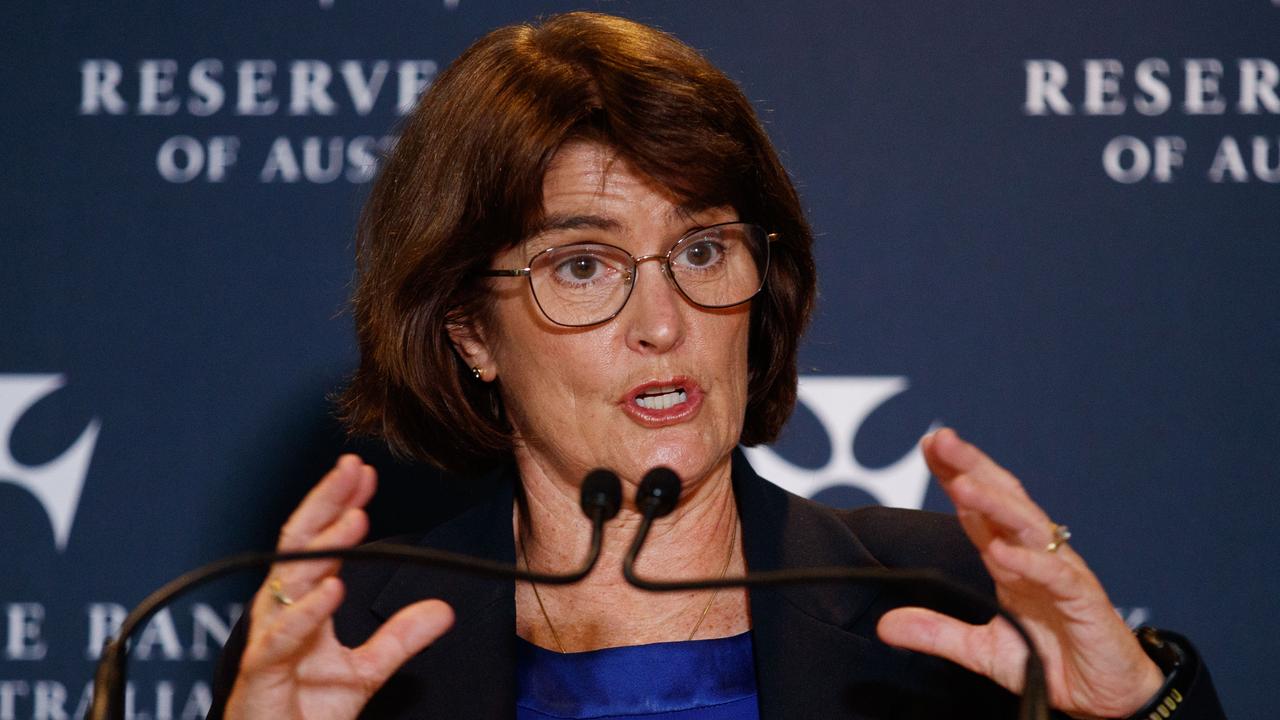Australian banks look to UK as ‘micro branches’ are opened
YOUR bank branch could be very different soon, as Australia’s big four banks mimic the radical changes that are happening overseas.
Banking
Don't miss out on the headlines from Banking. Followed categories will be added to My News.
BANK branches the size of garden sheds, staffed with baristas but with no actual tellers, could be the future of banking.
A retail finance expert has told news.com.au that Britain, where the new style bank networks are being rolled out, is “ahead of the curve” when it comes to revamping — and closing — branches and Australia’s big four will be watching closely.
The UK’s Lloyds Bank is to open tiny branches measuring just 14 meters square in smaller towns and suburbs.
The so-called “micro branches” will be stripped of cashiers and have only two staff on hand who will be armed with iPads rather than the key to the cash drawer.
No money will change hands, instead customers will be directed to a wall of ATMs and other auto tellers.

“Think Apple store, as opposed to bank branches,” Jakob Pfaudler, Lloyds’ chief operating officer for retail told the BBC.
“We have a lot of branches that used to have a lot of footfall, and therefore feel quite empty and intimidating for customers,”
Alongside the micro branches, larger banking centres will open in major cities offering a larger range of services.
Some have speculated the move is a way to avoid politically tricky branch closures, of which there have been hundreds across the UK costing tens of thousands of jobs.
Australia’s bank network has not been as decimated as the UK’s, but there are fewer branches than yesteryear.

According to the Australian Prudential Regulation Authority, banks, building society and credit union branch numbers fell by 315 to 5904 in the year to June 2016.
“The UK is ahead of the curve with branches because there’s a lot more competition than in Australia so there’s a bigger drive to increase revenue and decrease costs,” Professor Steve Worthington, an expert in retail financial services at Swinburne Business School, told news.com.au.
“Everyone is trying to get more value out of their real estate — their branches — and their employment costs.
“Australian banks will be looking closely at this hub and spoke branch idea which could see you having a video conversation from a micro branch with someone in a regional banking centre,” Prof Worthington said.

Other new banking initiatives in the UK include Virgin Money, which has opened lounges serving free coffee — but solely to account holders.
While no Australian banks told news.com.au they were going to imminently introduce micro branches, it’s no doubt traditional counters and tellers are a thing of the past.
On Wednesday, NAB launched a new concept branch in Sydney called “NAB on George”. It includes an “explore zone” for digital products and space for video conferences, seminars and events.
Executive General Manager of NAB Retail, Bob Melrose, said it was the blueprint for future branches.
“The way customers interact with us in five years’ time will very likely be different to how they do today, as customers continue to move away from traditional transaction-based interactions like cash withdrawals and cheque deposits in branch.”
Westpac is rolling out branches where glass screens are ditched in favour of open plan layouts.

Commonwealth Bank has also cleared away the glass in 88 branches where staff are now encouraged to have “conversations” with customers.
“We are bringing our customer service people out from behind the counter … where they can provide a greater level of customer service from a more comfortable position,” a spokeswoman told news.com.au. “There will be fewer transactions but more conversations.”
A 2016 report by Pricewaterhouse Coopers said branches were “possibly the most under-utilised asset banks have.”
Billions had been spent on revamps to make them more appealing, it noted, with many now called “stores” rather than branches.
“The vision was some sort of cross between Starbucks and an Apple store. Yet for the past two decades branches in almost all markets have consistently lost share to alternative channels,” the report said.
Figures from Commonwealth Bank illustrate just how much branches have fallen from favour. In 2003 around 130 million transactions were funnelled through branches, this year that will be down to barely 60 million.
Over the same period, online transactions have gone from 40 million to 684 million annually.
But there’s another figure that means at least some branches will always be safe.
While only 2 per cent of total transactions occur in branches, this accounts for 33 per cent of transactions by value. So branches are punching above their weight in financial terms.

Prof Worthington said branches were now the go to place for “complex transactions” such as mortgages and loans. An app simply couldn’t replace talking with a real life human when you might be about to sign up to a $1 million dollar 25 year home loan, he said.
News.com.au asked all Australia’s big four banks how many jobs had been cut due to branch closures and if further closures were planned. None revealed the number.
A Westpac spokeswoman said, “We constantly review our branch network and decisions are driven by customer behaviour and preferences.”
The public and political fallout was one factor against cutting their networks en masse.
“Forget AFL or NRL, Australia’s most popular sport is bank bashing so public relations may play a role in holding them back from closing branches,” said Prof Worthington.
The sheer profitability of Australia’s banks also meant they were under less financial pressure to do so. Lloyds, for instance, was bailed out by the British Government to the tune of $32 billion in 2008.
But micro branches allowed a middle ground of cutting costs while maintaining branch numbers, he said.
Don’t be surprised if your grand old baking hall gets a whole lot more teeny tiny in the years to come.
Originally published as Australian banks look to UK as ‘micro branches’ are opened







